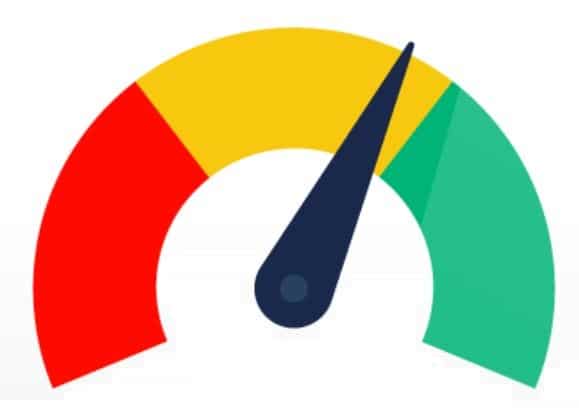Despite their efficacy in improving conversions, some pop-ups pose risks due to Google’s devaluation of websites using intrusive ads since 2018.
🚫Intruisive pop-ups can hinder user experience. For example, content-covering pop-ups, overlay pop-ups that are not easy to shut down or redirect user who accidentally click on them easily, and those that interrupt users as they navigate between pages or before they reach your homepage.
So you might be wondering how to use pop-ups without severely impacting SEO. Here are a few tips.
1. Use Non-Intrusive Interstitials:
Legally required notifications and non-disruptive pop-ups like banner ads or slide-ins are good to go with. Be careful when using unexpected interstitials like language selection pop-ups, sticky sidebars, related posts, etc. If you must use pop-ups and/or overlays, redesign them to be as unobtrusive as you can and avoid full-screen overlays, welcome mats, and intrusive ad modals.
2. Relevance and Value:
Make sure the pop-up content is relevant and valuable to the user. You should focus on aligning the offer with the user’s needs, preferences, and the context of their visit to your website.
3. Time Pop-ups Wisely:
Redesign pop-ups to trigger after users finish reading the content or limit display time to prevent annoyance. Set a cap on the frequency of displatying pop-ups. Content quality matters for effective timed pop-ups.
4. Desktop vs. Mobile Approach:
Certain websites have resorted to a temporary fix for the interstitial penalty by concealing pop-ups on mobile devices while maintaining their exclusive use for desktop users.
Plently of pop-up plugins offer smart targeting features, enabling the display of ads solely on chosen platforms. That can serve as a temporary fix but not a permanent solution.
5. Restrict Pop-up Sources:
Limiting pop-ups to visitors from sources other than Google organic search might be a solution. Google’s specific focus lies on interstitials that emerge between the initial ‘search click’ and the point when users begin interacting with the page’s content. Actions following this phase—such as user interactions within your site, closing tabs, or subsequent activities—are considered by Google as part of the relationship between you and the user.
Pratical Use Cases of SEO-Friendly Pop-Ups
1. Optimal Ad Placement:
Use less ads than content. Websites with one or two non-intrusive ads placed alongside or above the main content, or a maximum of three smaller ads, typically meet acceptable standards.
2. Managing Newsletter Pop-Ups:
Avoid immediate presentation of newsletter sign-ups upon site arrival, instead activating them after user interaction to maintain a positive user experience.
3. Supplementary Content:
Relevant supplemental content, such as “related posts” in sidebars, can significantly enhance a website’s quality and user experience, aligning with Google’s Quality Rater Guidelines. Additionally, clear labeling of ads as sponsored and ensuring they don’t obstruct the browsing experience is crucial for website quality.
A General Rule of Thumb
If your interstitials are spammy, hard to close, or diminish your users’ experience, your mobile page may be negatively impacted, specially that Google uses mobile first indexation. This may impact your positions in search engine result pages more than you realize.
Focusing on understanding intrusiveness, using non-intrusive methods, timing pop-ups, watching for gray areas, and considering cautious approaches for both desktop and mobile users while emphasizing the importance of content quality.
🔍 Reach out to the SEO Transformers in Switzerland to help you grow your website online!
Google’s Stance on Interstitials and SEO: Insights from John Mueller
Google’s John Mueller recently provided a detailed explanation regarding the impact of interstitials on search rankings. He clarified Google’s position and offered insights on how to showcase interstitials without negatively affecting website rankings.
Interstitials, especially on mobile, are advertisements that cover significant portions of a web page, potentially obstructing user access to content. There are two primary types: one overlays a substantial part of the page and requires user action to close, while the other covers the entire page.
Google’s negative ranking factor against interstitials introduced in August 2016 and implemented in January 2017, targeted mobile interstitials as a negative ranking factor. Specifically, Google highlighted scenarios where interstitials impeded user access to the main content, resulting in a poorer page experience.
In a question addressed to Mueller about the impact of interstitials on rankings, the concern was raised regarding the usage of interstitials despite their proven performance, in comparison to banner ads, for optimizing screen space in mobile apps.
“What we’re looking for is really interstitials that show up on the interaction between the search click and going through the page and seeing the content. So, that’s kind of the place we’re looking for those interstitials.
What you do afterward, like if someone clicks on stuff within your website or closes the tab or something like that, then that’s kind of between you and the user.”
Strategic Placement and User Experience
Mueller reiterated Google’s unchanged stance: intrusive interstitials remain a factor affecting page experience and consequently, rankings. However, he clarified that interstitials strategically placed within a user’s website journey, rather than obstructing initial content access, may not trigger negative ranking implications.
From Google’s perspective, if interstitials are presented to users between natural flows within the website or during specific moments like transitions between levels in a game, it’s viewed more favorably. The key is to ensure that users can access the promised content seamlessly without being immediately confronted by intrusive interstitials.
In essence, Google emphasizes prioritizing a positive user experience upon landing on a web page from search results. As long as the interstitials aren’t the initial content users encounter and don’t hinder immediate access to expected content, they may not negatively impact rankings.
Approved Interstitials by Google
Mueller outlined a method to display interstitials without incurring a negative ranking impact from Google. He said:
Mueller:
“However, this is essentially focused on that moment when a user comes to your website.
So if you’re using interstitials as something in between …the normal flow of when a user goes to your website, then from our point of view that’s less of an issue.
But really, if someone comes to your website and the first thing that they see is this big interstitial and they can’t actually find the content that they were essentially promised in search then from that point of view that looks bad.
But if people can go to your website, they can do something on there, they can start to play a game, and kind of like at the start of the next level you show an interstitial ad then from our point of view, that’s perfectly fine.
That’s essentially something between you and the user and finding that balance of how many ads you show or how you present those ads during the …session on the site, that’s essentially something up to you.
So from that point of view, probably this is less of an issue to focus on.
I don’t know your specific website, I don’t know how it is when users go to it.
But that’s something where probably I would guess it’s okay.”
Explore more:
Sign up to our newsletter and receive SEO updates to your inbox









